I’ve talked about them a lot. The secret sauce to all of your local SEO millions. The way you’ll buy that new sweet car, everybody in your neighborhood will envy.
Can’t remember? Think a little bit better.
It’s location pages.
Location pages are the local SEO strategy that still most companies do not implement, yet they’re the way to get customers from cities you don’t have an address in.
Today, you’ll learn exactly what they are and how to make them.
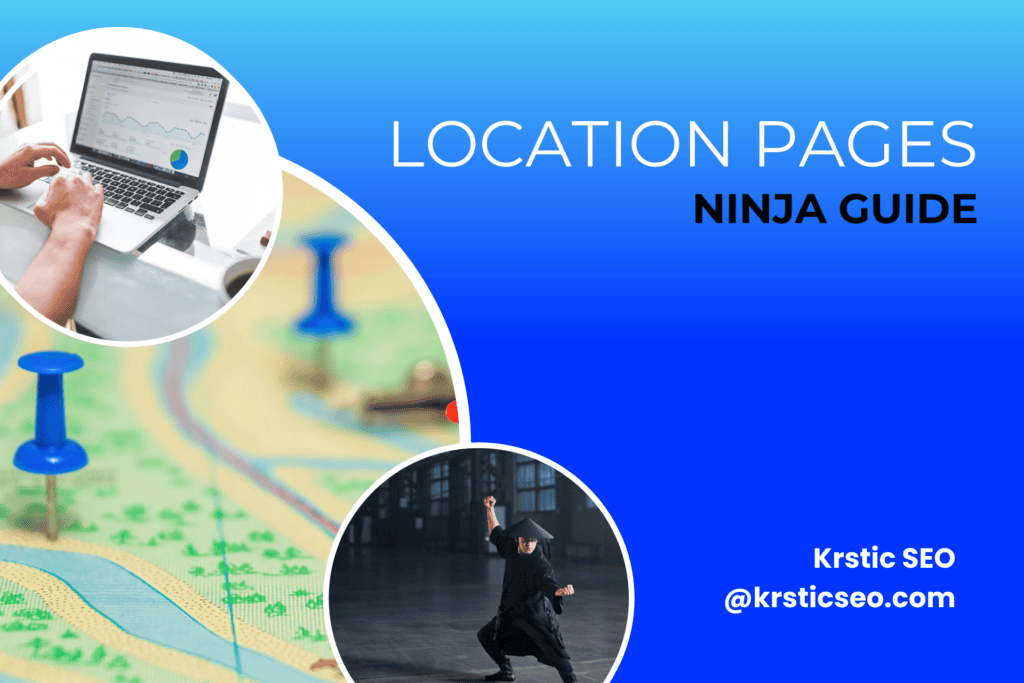
~8 Minute Read
Warning!
This post will contain advanced terms and SEO strategies. If you're a beginner, you may come across many phrases that confuse you. Most of our blog is completely aimed towards beginners, but this post separates men from the boys. In other words, if you implement these strategies in the end, you'll likely be one of the few companies in your close proximity doing them, hence landing the customers you're looking for. Good luck!
What Are Location Pages?
Location pages, service area pages, local SEO landing pages, local landers, city pages, and others are all terms referring to an SEO landing page targeting a particular area you want to get more customers from.
It’s best to explain through an example. After that, you’ll actually see me make one location page.
This will be the most in-depth article you’ll read on local SEO landing pages and how to rank in multiple cities you’re not based in.
Imagine I’m a roofer based in a location below – Columbia, SC.
In short, location pages would be pages on your website titled “Best Roofers Columbia, SC,” “Best Roofers Sumter, SC,” and other circled cities.
Each of them would rank on Google when somebody from a given location – let’s say Sumter – would Google “roofer near me” or “roofer Sumter.”
A Google Business Profile can only rank you 4-10 miles from your address. Most businesses never get a 10-mile reach because it requires extensive prominence, even when competition is low.
Prominence is achieved through reviews and link building, but that’s a story for another day. Just know that location pages can rank you further away from your address than a Google Business Profile can.
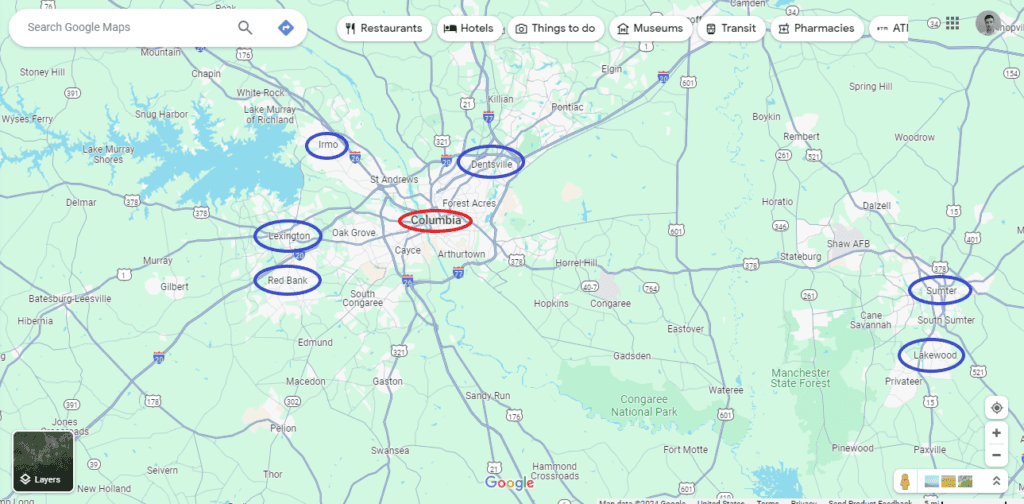
What to Do Before Making Location Pages
In this case, my roofing SEO would involve the following steps:
- First, making a branded homepage. This page would be packed with information and highlights about our brand – all the licenses, certifications, reviews, testimonials, and special achievements. The title of the homepage would be something like: “ABC Roofing – Roofing Contractor You Can Trust.”
- Then, listing out all the services on the page. There would be a “Header 2” (or, simply put, a subheading) called “Our Services,” and then each of the services listed under “Header 3s” (Roof Repair, Roof Replacement, etc.).
- And finally, listing all the cities we serve. Same strategy. “Our Service Areas” as Header 2 and then each of the cities underneath as Header 3s.
- Business name
- Address
- Phone number
Put an email associated with the domain too ([email protected] for example) and link to social media profiles.
The goal of all of these steps is to make sure that your website is branded and isn’t targeting any locations with SEO on its own (Google may still rank a homepage by reading that NAP in the footer).
Why?
Well, that’s what location pages will be there for. By making sure the rest of the website is unoptimized for any cities, you make room for location pages to rank instead.
Otherwise, if your homepage is also optimized for “Best Roofers in Columbia, SC, ” there would likely be some problems.
Now, you’re ready to build your location pages.
And guess what! You will now see me make one live.
🥷 Ninja Tip! 🥷
Look up all services you're selling with a "near me" modifier - "mold remediation near me," "fire damage restoration near me," "carpet cleaning near me," "commercial cleaning near me," "crime scene cleanup near me," and others, and then search all of them again but put [your city name] instead of "near me" to get the full picture. This all quickly adds up to hundreds or even thousands of potential leads per month per location.
How to Make a Location Page That Ranks and Converts
Being an SEO business, we can serve anyone anywhere. But we’ll start with making a landing page for some of the cities our clients are based in.
Overarching Service Areas Page
The prepwork for location pages is the overarching service areas page. This is a page that will further link out to all of your service area pages and be their URL parent.
If you have actual offices in multiple cities, then you’d call this page “our locations page” instead.
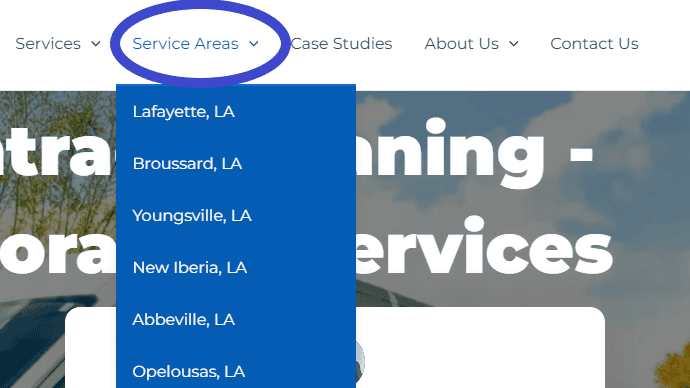
Many SEOs skip this step, and honestly, there’s no right or wrong way to do this – you can both have this parent page or not. Depends on your preference.
It is great for your users, as they’ll easily be able to see if you serve their location or not, and it is an opportunity for internal linking, which is a strong ranking factor.
How to Make a Location Page
Oh boy, here we go. The actual part you wanted to see.
Title, Subtitle, and CTA Above Fold
The title should entice your visitors to check out the rest of the page (at least) and follow the CTA (ideally).
Your page’s main title needs to have a keyword; it is one of the most crucial elements of location page SEO.
However, at the same time, it needs to be enticing. Just saying “Roofing Charleston” is boring and not exciting.
But if you’d perhaps said, “Roofing Charleston – Our Roofs Last The Longest (Proof),” it could get them to read the rest of the page, because that’s the main goal.
What purpose does more traffic serve if it doesn’t convert?
And finally, the red button you see is the CTA. For you, it could be “Book an Appointment” or “Request a Free Quote.”
Note that all of this needs to happen before the customer has a chance to scroll (whether on desktop or mobile).
Below Fold Section
Now, while I am not the pro-copywriter, here’s what I typically do in the first section below the fold (so, as soon as the customer scrolls).
- Put something like “As Seen In,” “Our Clients,” or similar to demonstrate credibility and authority in the field.
- Lead the first paragraph with what we can help the customer with, what the end goal is, and who we help.
- Another CTA as soon as the paragraph ends.
You can upload an image here, a full-fledged gallery, or even a video. Whatever you do, make sure that it’s not a stock photo but rather an actual photo demonstrating your work (or, even better, results).
Reviews
There are various plugins (if on WordPress) that you could use to pull all of your reviews from the web and display them in a nice-looking way, like TrustIndex, for example.
But a reviews are a must for every commercial-intent page on your website, not just a location page.
Ideally, the reviews would be from customers actually based in that city.
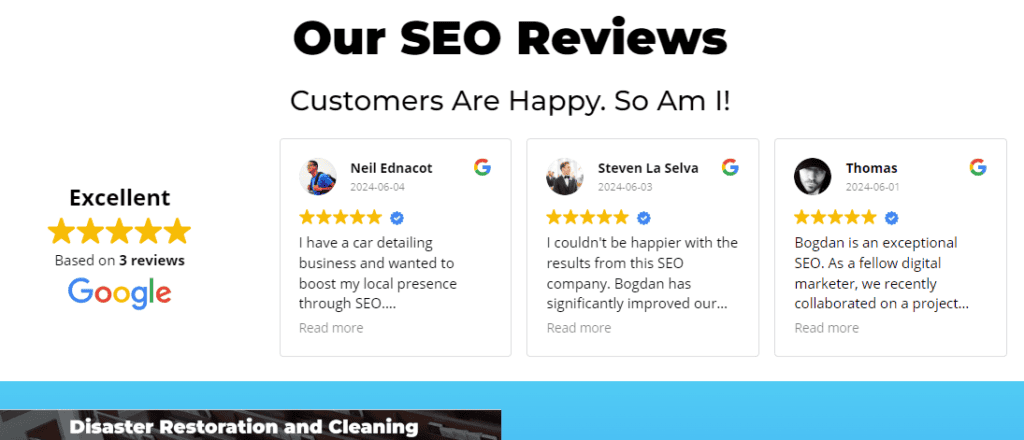
Localized Content
Localized content refers to information about what you’ve done in that location.
Put the projects you’d actually done in that city. Perhaps mention street names or prominent places near which the projects were done (maybe the projects were even done on those prominent locations; in that case, if you don’t have NDAs in place, use that).
And, most importantly, go over the results you’ve achieved in that city/town for your clients. End the paragraph with a CTA.
The goal of this section is not as much to convert the user (although showing that you’re local always helps, as AI can’t add as much human element to local content as someone actually based in an area with experience can, which is you), but to show Google that you’re local, increasing the chances of your page ranking.
List Out Bullet Points
Point out the benefits of your service and what you can do for your clients via bullet points if you want.
This is just a bonus thing you can do, and now the section is meant more for conversions than SEO.
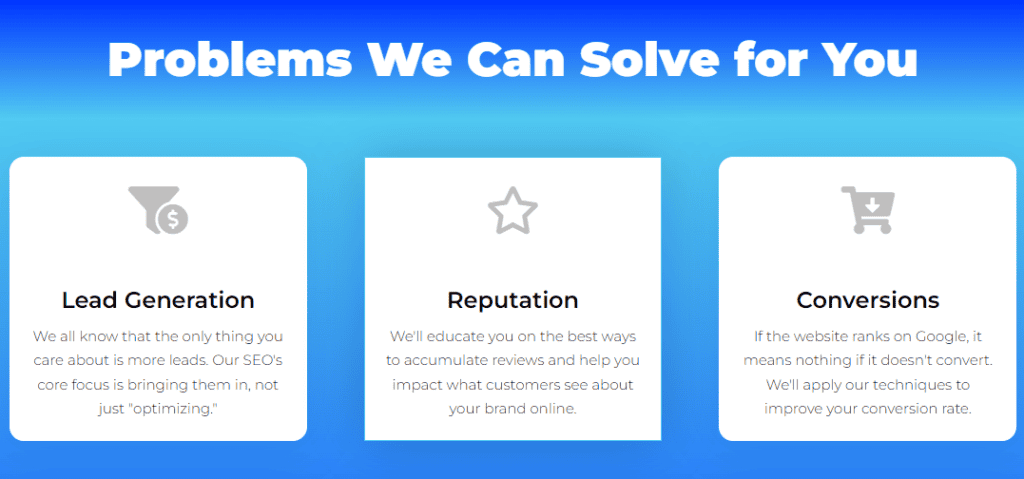
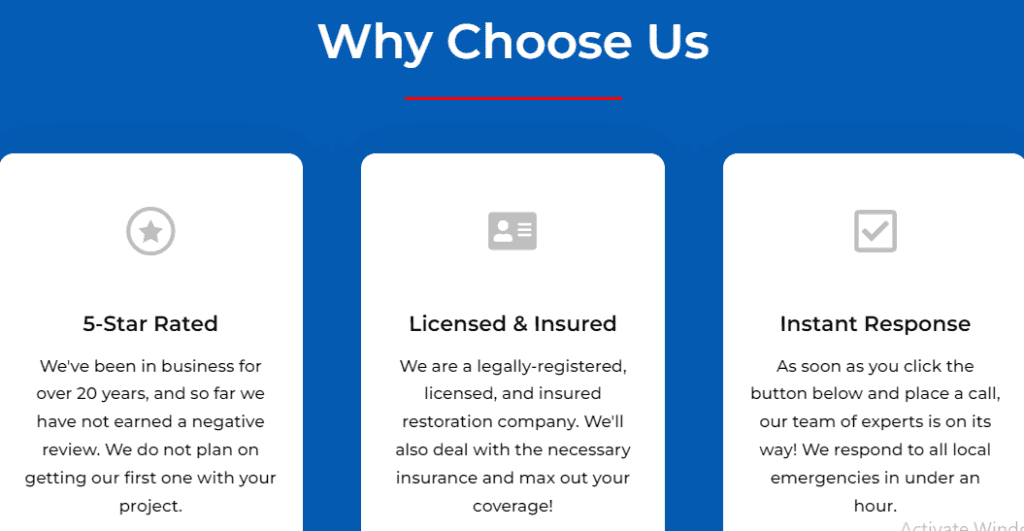
List Out The Services
Next, you should list out all the services and internally link to those service pages.
Use Header 3 or Header 2 tags for the service names.
This helps Google pull information and rank you for service keywords with “near me” modifiers – “local seo near me,” for instance.
It also paves the way for a potential second-level location + service page. In my case, that could be: krsticseo.com/locations/lafayette-la/seo or krsticseo.com/locations/lafayette-la/ppc.
This is advanced targeting typically required in very competitive niches in bigger cities.
FAQs
Another sweet addition to your location/service area page could be an FAQs section. You pull these either from your own head (remember which questions customers often ask you on the phone or onsite) or from “People also ask” section on Google when you search for your main keyword.
Use an “FAQ schema” for this section.
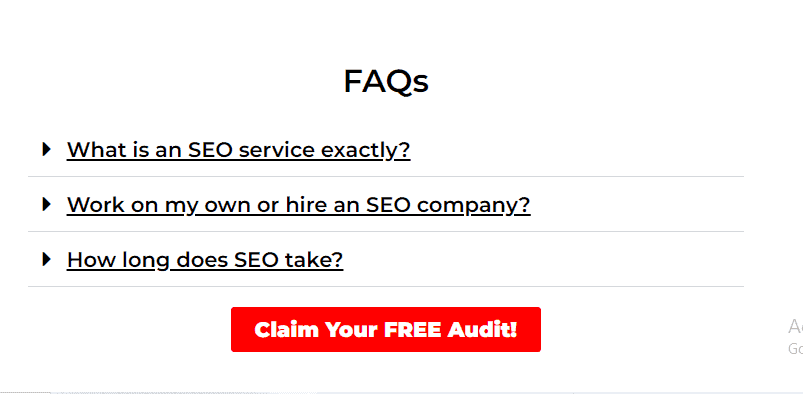

That was quite a lot, was it?
Well, I warned you it’s going to get technical. But it doesn’t stop there:
- You could also add an “Our Portfolio” section
- You could mention some of your employees’ names that are actually from that location (if applicable)
- You could go a step further and create neighborhood pages with your city page as a parent (mostly applicable in metro cities, though, unless it’s a really niched-down business like real estate)
But most businesses don’t have to go as insane as this.
Google Business Profile
The final touch-up to ranking your business in surrounding towns would be to edit the “Service area” section in Google Business Profile by adding the same cities you’d just made pages for.

What to Do from Here
That was a lengthy location page guide. A lot of different sub-topics were also mentioned that require their own posts.
If I were to let myself completely loose, this post would be 10,000 words long. But, I know I have to keep it digestible.
Now, if you are struggling and want a complete website building solution with SEO being first in mind, along with a proficient conversion rate optimization strategy, schedule a free website audit with us.
We’ll provide you with the steps that need to be taken, for free. From there, if you wish to partner with us long-term, we can talk about it. But first make sure to get your free audit and get familiar with the best local SEO strategy your business can follow.
Cheers!

Bogdan is a local SEO expert with over 3 years of experience helping businesses grow using Google. When he is not helping businesses grow, he works on his own SEO projects, works out, takes long walks, and watches Suits, which is completely ironic given how rarely he dresses up in a suit himself.
